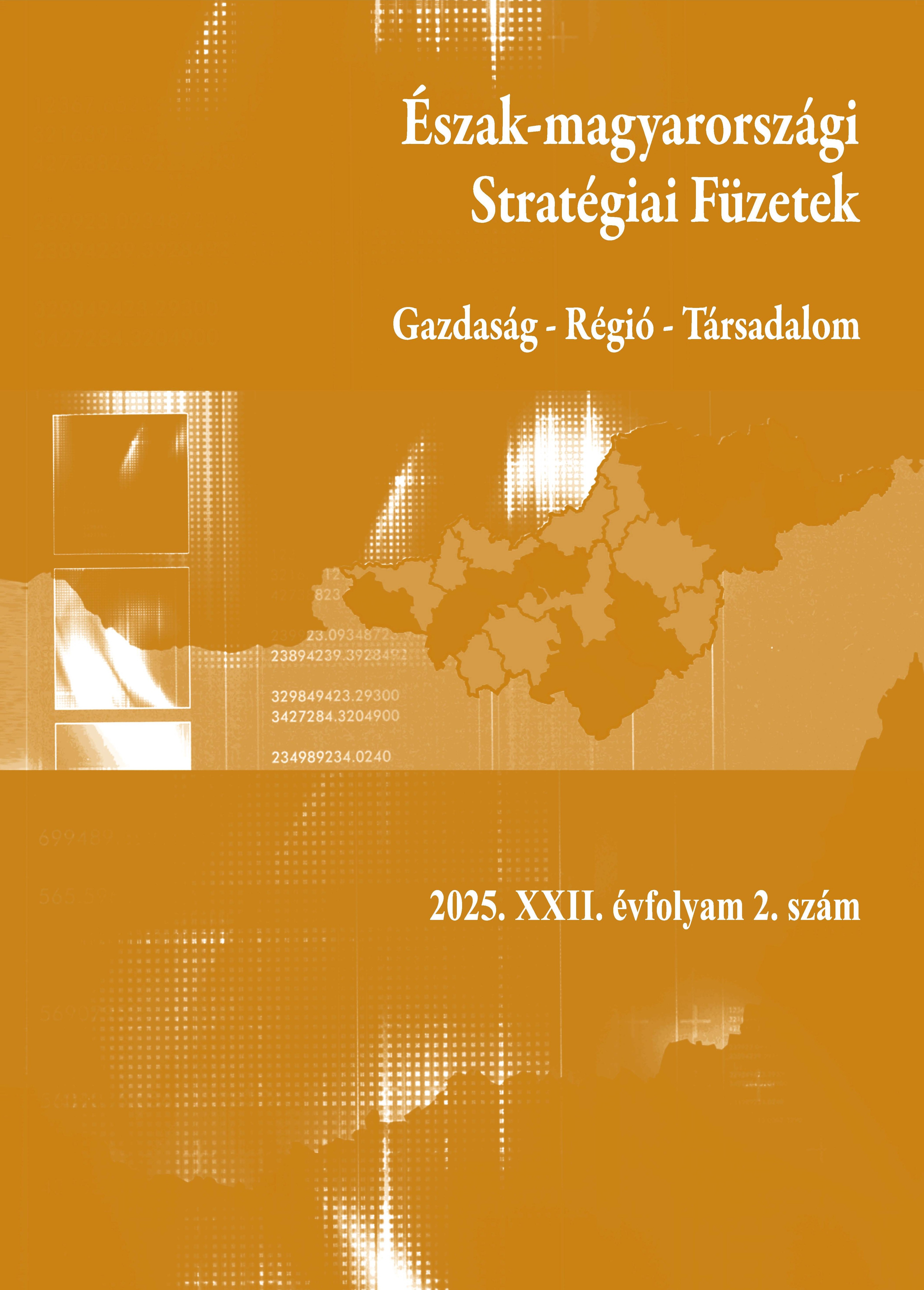The impact of investments on the economic performance of Borsod-Abaúj-Zemplén county in relation to the 2014-2020 European Union development cycle
DOI:
https://doi.org/10.32976/stratfuz.2025.21Kulcsszavak:
county economic power, investments, European Union grants, Borsod-Abaúj-Zemplén countyAbsztrakt
In my study, I examined the territorial dimensions of Hungary's economic performance between 2013 and 2021. The choice of the time interval was based on a conscious methodological choice. The evaluation of the EU development cycle 2014-2020 requires knowledge of the economic situation before that period, so it was justified to choose 2013 as the starting year. This year can be considered as a record of the situation prior to the allocation of development funds, which provides a basis for an objective assessment of the economic situation prior to the interventions. The year 2021 was used as the upper limit for the period under consideration, as it already partly reflects the economic impact of the investments of the 2014-2020 development cycle. EU funds often have a multi-stage, longer-term impact on the local economy, so a timeframe beyond one year is necessary to measure results (ESF, 2018). Thus, analysing the period up to 2021 provides an opportunity to examine the after-effects of the funds in more detail and to capture structural changes.
Hivatkozások
BÁGER, G., & CSEH, T. (2020). Beruházási csúcsteljesítmény a magyar gazdaságban. (Peak investment performance in the Hungarian economy). Pénzügyi Szemle, 2020(1), 83–109. https://doi.org/10.35551/PSZ_2020_1_7
DOBÓ, R., & PINTÉR, T. (2022). Regionális különbségek alakulása különböző területi szinteken értelmezve Magyarországon (Regional differences at different territorial levels in Hungary). In BGE Szemelvények (Proceedings of Budapest University of Economics and Business) (pp. 58–63). Budapest: Budapest University of Economics and Business. https://doi.org/10.29180/978-615-6342-49-2_6
DUSEK, T., & KISS, P. J. (2008). A regionális GDP értelmezésének és használatának problémái. (Problems of interpretation and use of regional). Területi Statisztika, 11(48)(3), 264-280. https://real.mtak.hu/194015/1/ts2008_03_03.pdf
ESF. (2018). Selection and monitoring of ERDF and ESF projects for the period 2014-2020 (No. 21). European Court of Auditors. https://www.eca.europa.eu/Lists/ECADocuments/SR18_21/SR_PROJECT_PERFORMANCE_EN.pdf
HALMAI, P. (2023): Fenntartható növekedés, növekedési potenciál — A potenciális növekedés irányzatai az Európai Unióban (Sustainable growth, growth potential). Pénzügyi Szemle = Public Finance Quarterly, 69(1), 47-64. https://doi.org/10.35551/PSZ_2023_1_3
IAMMARINO, S., RODRÍGUEZ-POSE, A., & STORPER, M. (2019). Regional inequality in Europe: Evidence, theory and policy implications. Journal of Economic Geography, 19(2), 273–298. https://doi.org/10.1093/jeg/lby021
JAKOBI, Á., SZABÓ, M., MISZLIVETZ, F., & MORVAY, SZ. (2024). A területi stratégiai gondolkodás egy lehetséges komplex közelítése: a „Kreatív Város Fenntartható Vidék” koncepció friss tapasztalatai. (A possible complex approach to spatial strategic thinking: recent experiences of the "Creative City Sustainable Countryside" concept). COMITATUS, 34(250), 137-146. https://doi.org/10.59809/Comitatus.2024.34-250.137
KOCZISZKY GY. (Ed.) (2024). A jövő fenntarthatósága – A fenntarthatóság jövője. (The Future of Sustainability - The Future of Sustainability). Budapest: Budapest Metropolitan University.
KOCZISZKY, GY., & SZENDI, D. (2021). Quo vadis Észak-Magyarország? A régió lehetséges fejlődési pályáinak ex-ante vizsgálata (Quo vadis North Hungary? An ex-ante analysis of possible development paths in the region). Területi Statisztika, 61(6), 679-711. https://doi.org/10.15196/TS610601
NAGY, Z., TÓTH, G., & SZÉP, T. (2022). A magyarországi városok rezilienciájának vizsgálata (Examining the Resilience of Hungarian Cities). Észak-magyarországi Stratégiai Füzetek, 19(3), 84–99 https://doi.org/10.32976/stratfuz.2022.37
PIKE, A., RODRÍGUEZ-POSE, A., & TOMANEY, J. (2017). Shifting horizons in local and regional development. Regional Studies, 51(1), 46-57. https://doi.org/10.1080/00343404.2016.1158802
TÓTH, G. (2024). A társadalmi innovációs potenciál és a területi jóllét számszerűsítésének lehetőségei. (Possibilities of quantifying social innovation potential and territorial well-being). Statisztikai Szenle (Statistical Review), 102(7), 679–713. https://doi.org/10.20311/stat2024.07.hu0679
VARGA, Á. (2023). A gazdasági függőséget meghatározó tényezők területi egyenlőtlenségeinek változása Borsod-Abaúj-Zemplén vármegyében, 2000–2020 (Changes in the spatial inequalities of the determinants of economic dependence in Borsod-Abaúj-Zemplén county, 2000-2020). Területi Statisztika, 63(6), 758–797. https://doi.org/10.15196/TS630605
##submission.downloads##
Megjelent
Hogyan kell idézni
Folyóirat szám
Rovat
License

This work is licensed under a Creative Commons Attribution-NonCommercial-NoDerivatives 4.0 International License.







